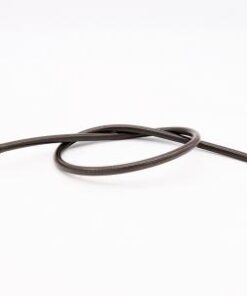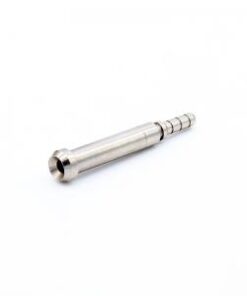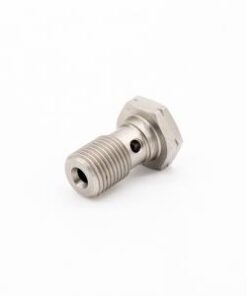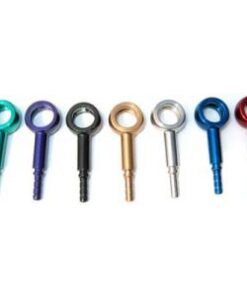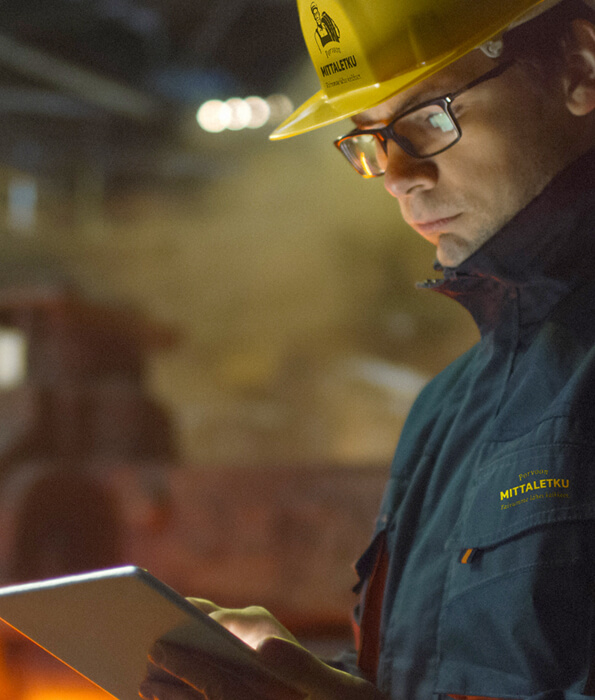Brake hose
The brake hose is an irreplaceable part of the vehicle's brake system and necessary for the proper functioning of the brakes. Brake hoses in poor condition may lead to reduced braking performance or broken brakes. A properly functioning brake system, on the other hand, is vital for the safety of the driver and passengers.
The operation of hydraulic brakes is based on the fact that when you press the brake pedal, the brake fluid moves through the brake pipes to the tire cylinder, where the fluid pressure on the brake pads causes the tires to stop. Brake hose is needed because the rigid brake pipe would break if it traveled all the way to the tire cylinders and brake caliper. The brake hoses thus function as an extension of the brake pipes at those points where adaptation to the movements of the tires required flexibility from the parts of the brake system.
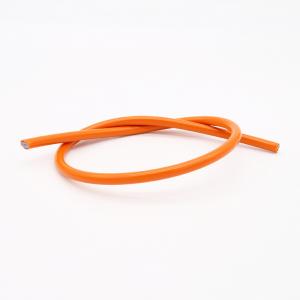
Maintenance of brake hoses
Brake hoses are supposed to last for years and tens of thousands of kilometers of driving. However, the brake hoses should be checked regularly for wear, cracks and damage and replaced if necessary. Since brake hoses in good condition are an essential part of driving safety, the hose should not be used if its surface shows cracks, corrosion, bubbles or other abnormalities.
Constant bending, turning, rubbing and high hydraulic pressure will inevitably wear out the brake hose over time. Worn brake lines are more likely to start leaking brake fluid. Sometimes the brake pedal feeling soft or hard can indicate a damaged brake hose. For example, a cracked brake hose may cause brake fluid to leak.
If the level of the brake fluid reservoir is too low, the braking force may decrease, and the pedal may feel abnormal. Abnormality near the brake pedal may also be caused by weakened hoses that expand due to brake fluid pressure. Other signs of faulty operation of the brake hoses are overheating of the brake drum, the car deviating from the controlled trajectory during sudden braking and strange sounds when pressing the brake pedal. The vehicle deviating in either direction from the controlled lane when braking may be due to one of the brake hoses being blocked.
At its simplest, a visual inspection reveals the condition of the brake hoses and the need for replacement. This is especially true for rubber brake hoses. You can bend the hose and see if you can see cracks or bubbles. You should also check if there are any signs of the brake hose rubbing against another component or wet stains that could indicate a hose leak. The feel of the brake hose should still be checked by hand.
It should feel firm but flexible and not soft or brittle. You can ask another person to pump the brake pedal while you yourself check the condition of the brake hoses under pressure. The expansion of the brake hose should only be barely noticeable.
Even if you only find a fault in one of the vehicle's brake hoses, you should replace all brake hoses at the same time. Brake hoses installed at the same time wear out at roughly the same rate. If you are unsure about the need to renew your brake hoses, you should bring the old brake hoses to the store. A hose expert knows how to look for cracks, bulges, tears or excessive wear in the hose and prepare a new hose to replace the old one.
Failure to inspect the brake hoses may contribute to larger and more serious damage to the brake system. It is therefore worth servicing the brake hoses regularly and investing in quality when purchasing them.
Brake hose material options
Brake hoses are made of rubber or steel braid. Rubber brake hoses are more common. Their advantage is good flexibility, good braking performance, a more affordable price and their operation in a wide temperature and hydraulic pressure range. Steel braid brake hoses the outer shell is often made of stainless steel braid, which is protected by clear plastic. The inner hose, on the other hand, is often Teflon.
The advantage of brake hoses made of steel is their durability. They are often less susceptible to wear from abrasion or damage from environmental factors such as damage from flying rocks. The steel braid prevents the hose from swelling under pressure, thanks to which steel braid brake hoses are usually longer-lasting than rubber brake hoses. In addition to these points, several drivers who have switched to a steel braided brake hose describe that the brake feel has improved.
Rubber brake hoses last up to six years. The service life of steel braided brake hoses is usually five to ten years or longer. However, it is impossible to predict the exact service life or durability of the hoses. In addition to the material, the service life and wear of the brake hose are affected by several factors, such as the quality of the hose, driving style, road conditions and the weight of the vehicle. Rubber brake hoses are easier to visually inspect for cracks or other damage, while damage to the Teflon of the lower layer of steel braided hoses is more difficult to detect when the steel braid covers it.
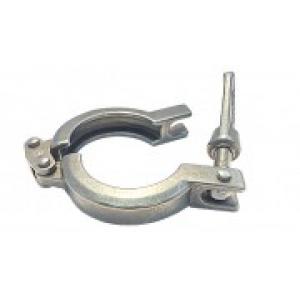
Didn't find what you were looking for?
You can always ask our hose masters for help in the chat, contact or explore the wide selection of our entire online store.

